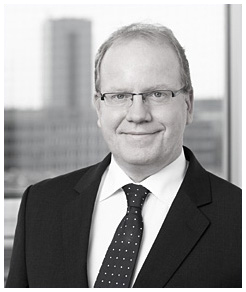Since our company was founded in the year 2000, we have constantly strived to make a positive contribution to our clients’ success, grounded in our firm belief that good patent translation can make a difference. – If it’s a piece of Japanese prior art that you need translated into English in order to understand its disclosure, a good translation will save you time (and money) in understanding the technical content. And if it’s a translation of an application to be filed at a national patent office, a good translation will increase the chances of a smooth prosecution process.
What do we regard as a “good translation”? First of all, we don’t think that technical accuracy and readability are mutually exclusive. Our aim is to create documents that correctly render the content of the original in another language, while being just as accessible and readable as the original. In fact, we believe that poor readability goes hand in hand with lower technical accuracy. A translation that faithfully recreates every lexeme (word) of the original is, in our opinion, not necessarily technically accurate and may even be useless if part of the disclosure of the original is unintelligible and therefore “lost” in translation. On the other hand, we do believe that sticking to the original as close as possible makes quality control easier and lowers the chances of misunderstanding the original. So, we don’t rewrite or “trans-create” when we translate, but translate all documents in such a manner that our clients can easily confirm that every piece of information in the original is also present in the translation. Usually, this happens by translating a text phrase for phrase, and not word for word or lexeme for lexeme. Thus, to us a good translation:
a) has the same disclosure as the original,
b) reads well, and
c) sticks to the original as close as possible (but only insofar as a) and b) can be met).
In addition, we follow a goal-oriented approach. This means that we don’t simply transpose a document’s words from one language into another, but prepare our translation while keeping in mind the purpose of the document and trying to anticipate any problems that may occur down the road. That is, when translating an application to be filed at a national patent office, we are aware that the translation will be subject to an Examiner’s scrutiny, so we will, for example, try to minimize clarity objections by choosing appropriate terminology, while staying within the exact technical scope as the original. We don’t rewrite claims to change their scope – we think it’s the job of the patent attorney who drafts the specification to decide the scope of the claims. But we do alert our clients to potential problems, such as wrong claim dependencies, apparent contradictions in the claims, etc.
We don’t think that there is such a thing as a “perfect translation” – just like there are no perfect patent specifications – and those who promise perfect translations might be peddling snake oil. But we do try to come as close to perfect translations as possible. At Horn & Uchida Patent Translations, Ltd., we follow several practices that set us apart. First of all, we break from the traditional agency model of taking the translation order, stuffing it into a different envelope and sending it to a freelance translator, who might be in a different city or even on a different continent. Most of our translations are done inhouse, at our company in Osaka. The friendly, collaborative atmosphere in our office ensures higher translation quality, as our translators are able to help each other and draw on each other’s experience.
Secondly, we will tell you who was in charge and responsible for your translation. When you need to have a patent specification prepared, you certainly wouldn’t be happy with a patent law firm that tells you that they will subcontract the drafting of the specification to some freelancer but cannot disclose their name or qualification. Or where they are located. So why would you accept this in the case of a translation? The translator is the person whose words are examined by the Examiner. Wouldn’t you want to know who that person is?
And last but not least, we have a proven track record of thousands of translated patent specifications. We are thoroughly aware of the patent procurement process, the relevant deadlines and the national requirements to be fulfilled (and occasionally give lectures on these topics). We check our translations inhouse, following the “four-eyes principle”, so that you don’t have to check every word. – In short, we want to be the patent translation company that you trust.
Yours sincerely,

Friedemann Horn, Patent Attorney





